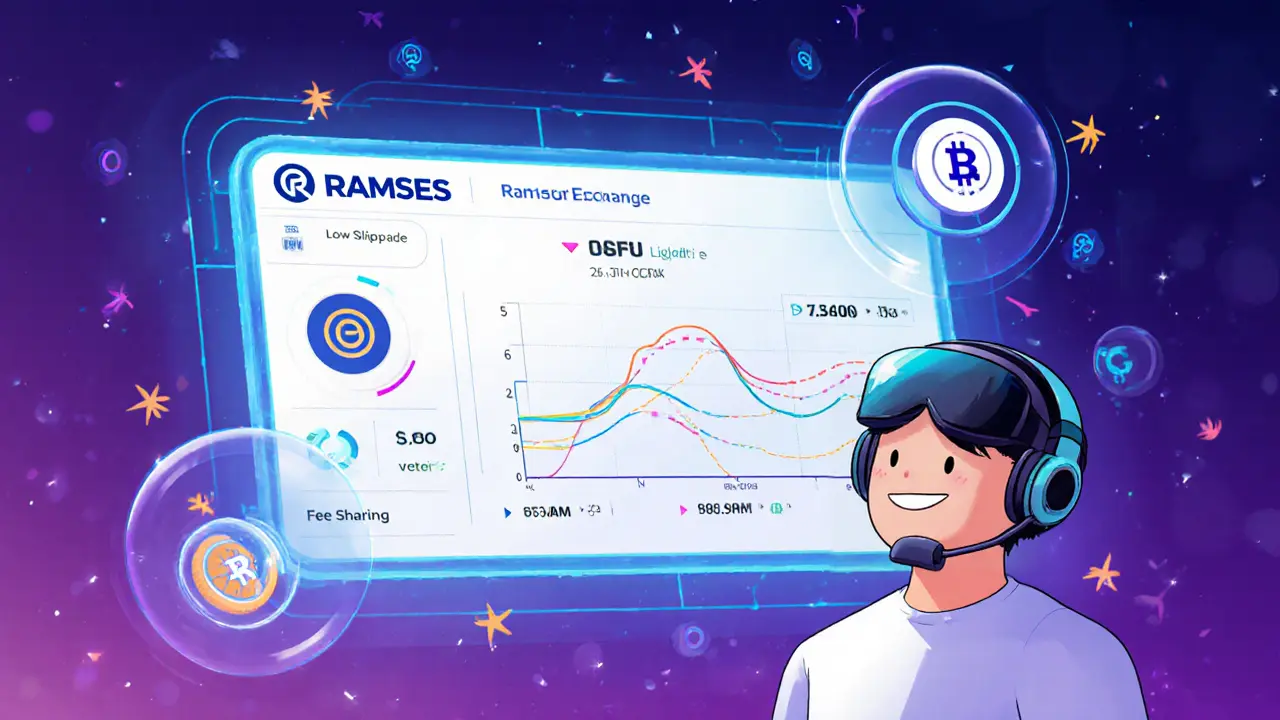In-depth Ramses exchange review covering tech, tokenomics, multi-chain rollout, user guide, pros/cons, and FAQs for crypto traders.
RAM Token – What It Is and Why It Matters
When you hear about RAM token, a blockchain‑based asset that lets users buy and sell on‑chain memory. Also known as RAM, it enables utility functions and governance rights within its ecosystem. In plain terms, RAM token is the fuel that powers memory markets on decentralized platforms, letting developers allocate storage without relying on a centralized provider. It blends the classic utility token idea with a governance layer, so holders can both pay for services and vote on protocol upgrades. Understanding the RAM token gives you a foothold in the broader conversation about crypto‑driven infrastructure.
Key Aspects: Utility, Governance, and Tokenomics
When you look at any utility token, a digital asset designed to grant access to a specific product or service, RAM token fits right in. It encompasses the typical features of a utility token – you spend it to lock RAM space, you earn it by providing storage, and you can stake it to earn voting power. This dual role creates a feedback loop: higher usage drives demand for RAM, which in turn boosts token price and liquidity. The tokenomics are simple yet effective: a fixed supply, a portion reserved for community incentives, and a burn mechanism that removes tokens when RAM is reclaimed, keeping scarcity in check.
Another piece of the puzzle is the airdrop, a distribution method where free tokens are given to eligible wallets. Airdrops have become a popular way to seed liquidity and attract early adopters. For RAM token, airdrop campaigns not only spread awareness but also shape the initial holder distribution, influencing governance outcomes. In practice, a successful airdrop requires clear eligibility criteria, secure claim processes, and transparent follow‑up plans – otherwise the token risks being hoarded by a few whales. The recent trend of “staking‑based airdrops” ties the reward directly to how much RAM a user locks, aligning incentives with network health.
Behind both the utility and the airdrop lies the blockchain, the decentralized ledger that records every transaction and enforces consensus. RAM token requires a robust blockchain to guarantee immutability, prevent double‑spending, and ensure transparent governance. The underlying protocol’s consensus mechanism (often a variant of proof‑of‑stake) decides how quickly RAM allocations are confirmed, directly affecting user experience. Moreover, smart contracts manage the lease‑and‑release cycle for memory, making sure that the token’s supply dynamics stay predictable.
Finally, RAM token plays a role in DeFi liquidity, the pool of assets that enables trading, lending, and yield farming across decentralized platforms. By providing liquidity for RAM‑paired pools, users earn fees whenever someone buys or sells RAM to increase their memory allocation. This creates a virtuous cycle: liquidity attracts traders, trading volume raises fee revenue, and fee revenue can be redistributed to liquidity providers, further deepening the market. In short, the token’s health hinges on a blend of utility demand, fair airdrop distribution, solid blockchain foundations, and active DeFi liquidity.
Below you’ll find a curated collection of articles that dig deeper into each of these angles – from technical guides on blockchain immutability to step‑by‑step airdrop tutorials and DeFi liquidity strategies – all aimed at giving you a complete picture of the RAM token ecosystem.

